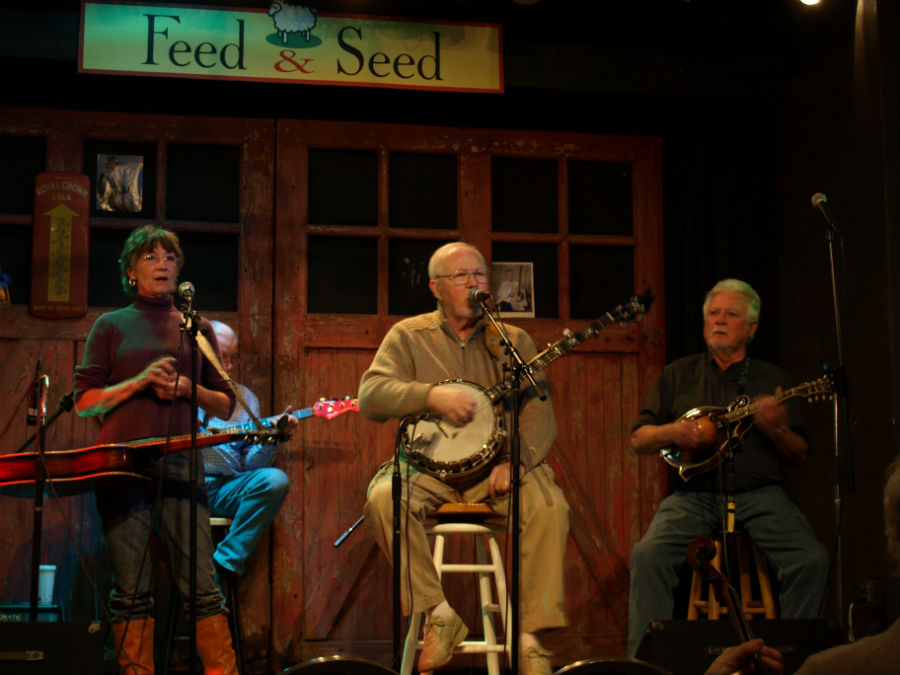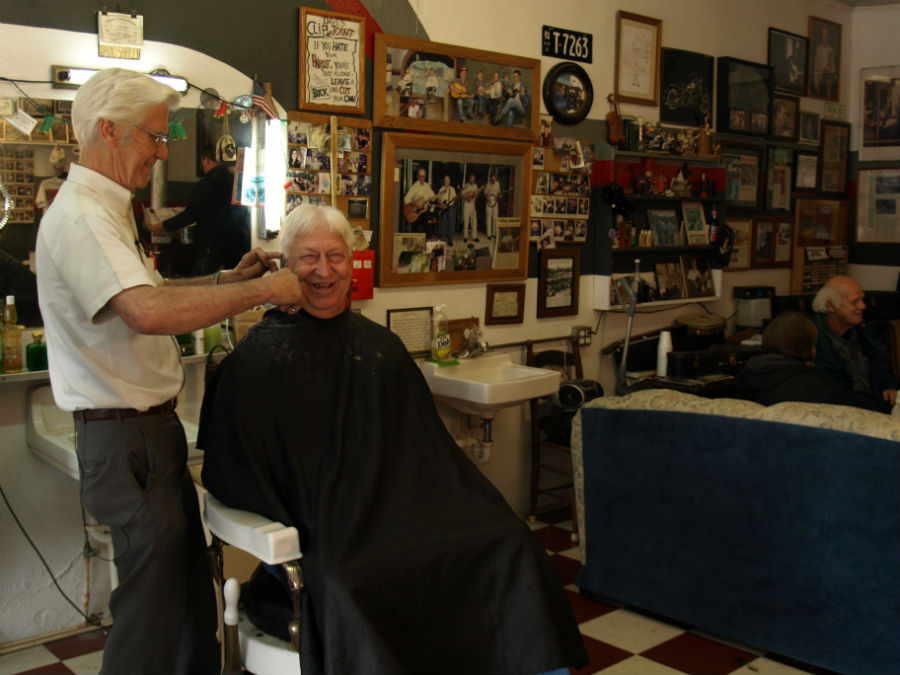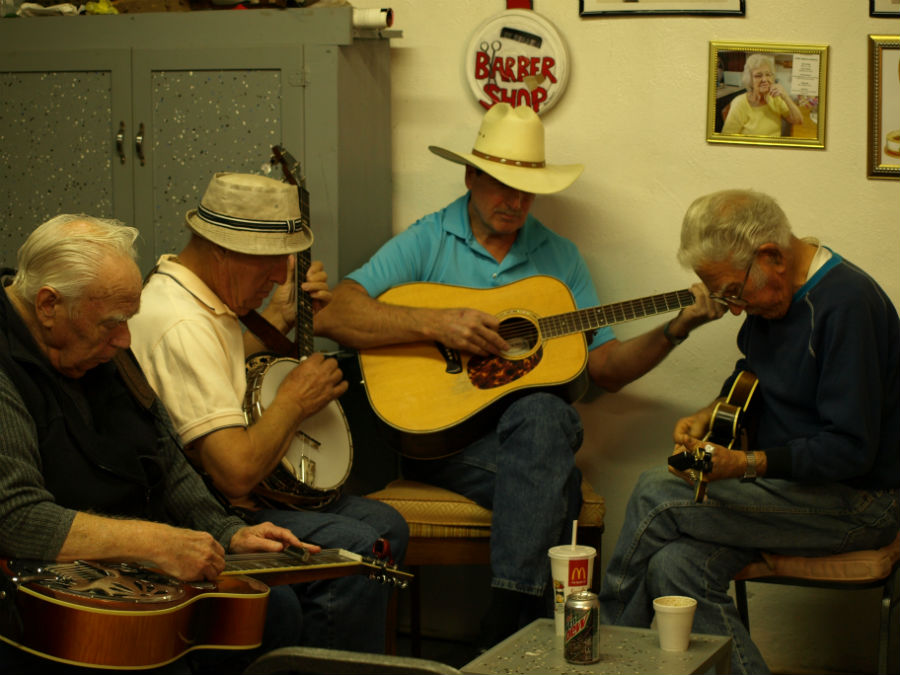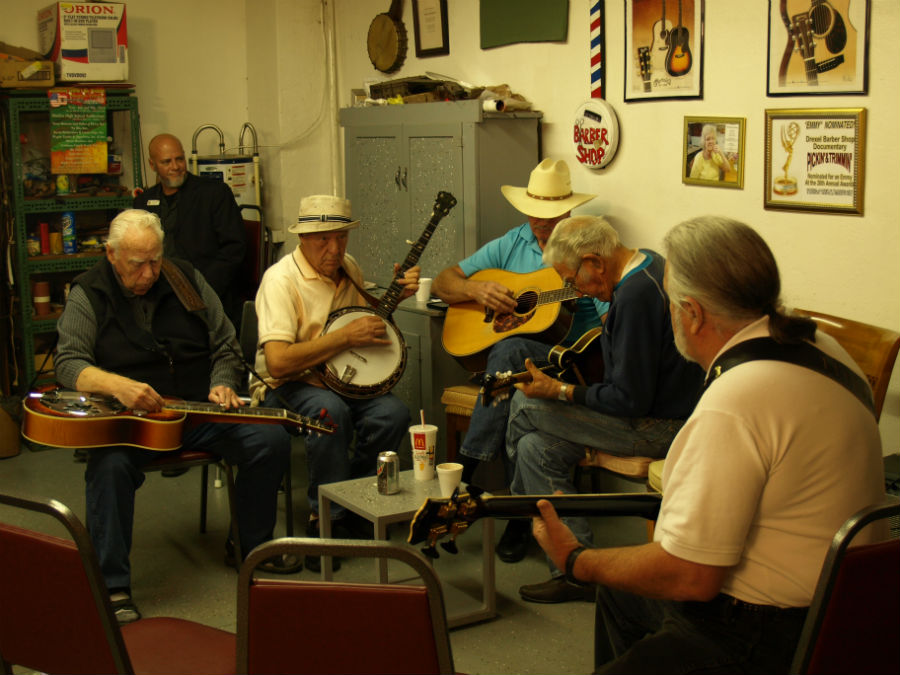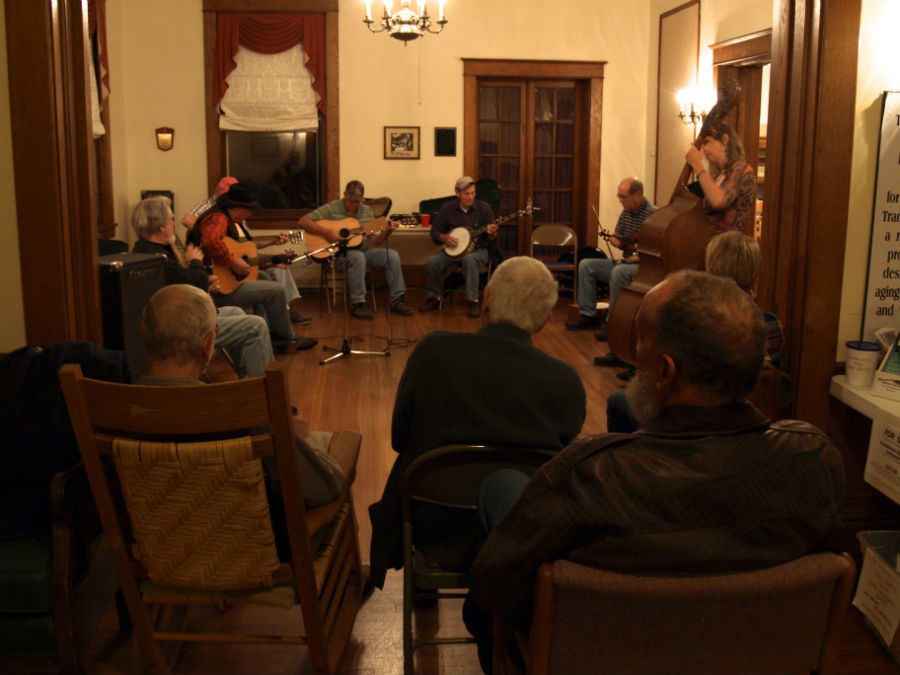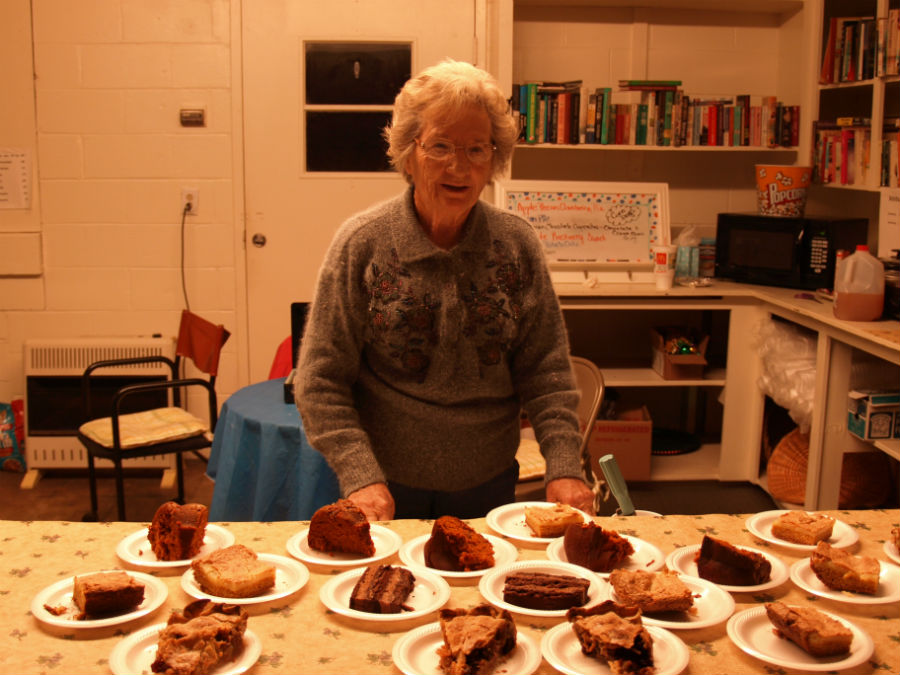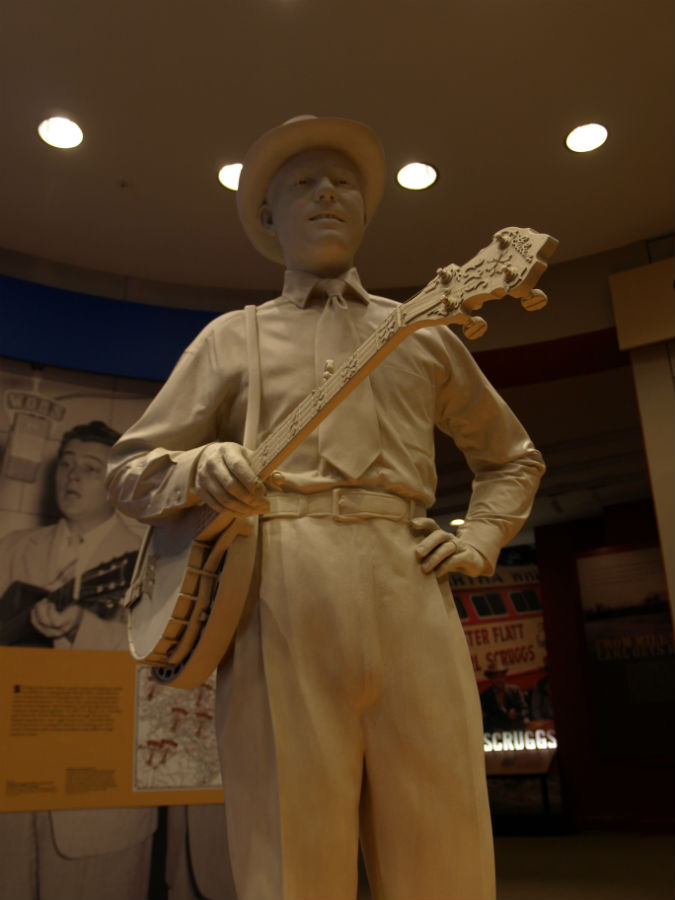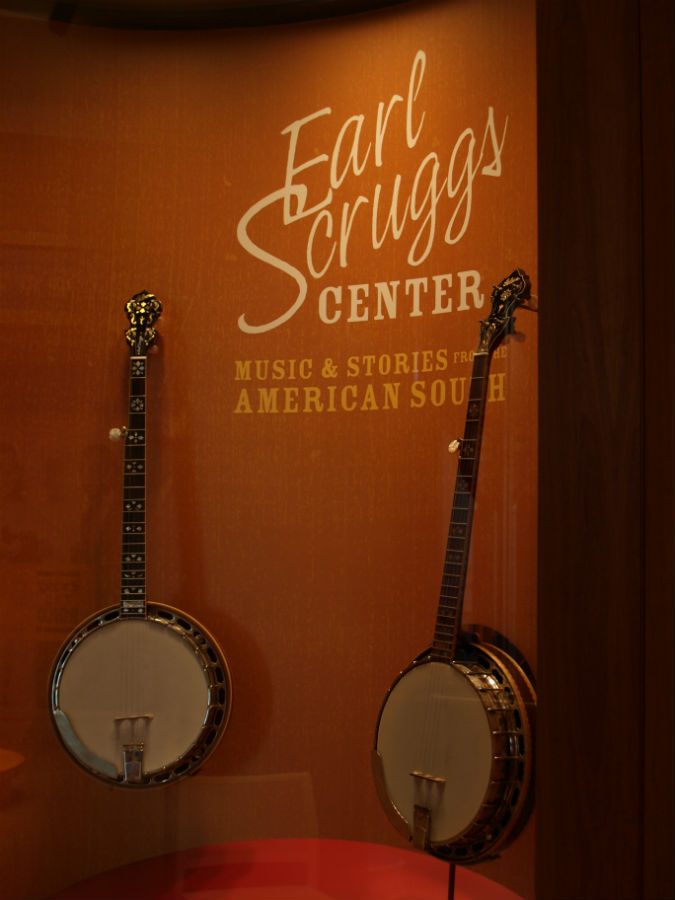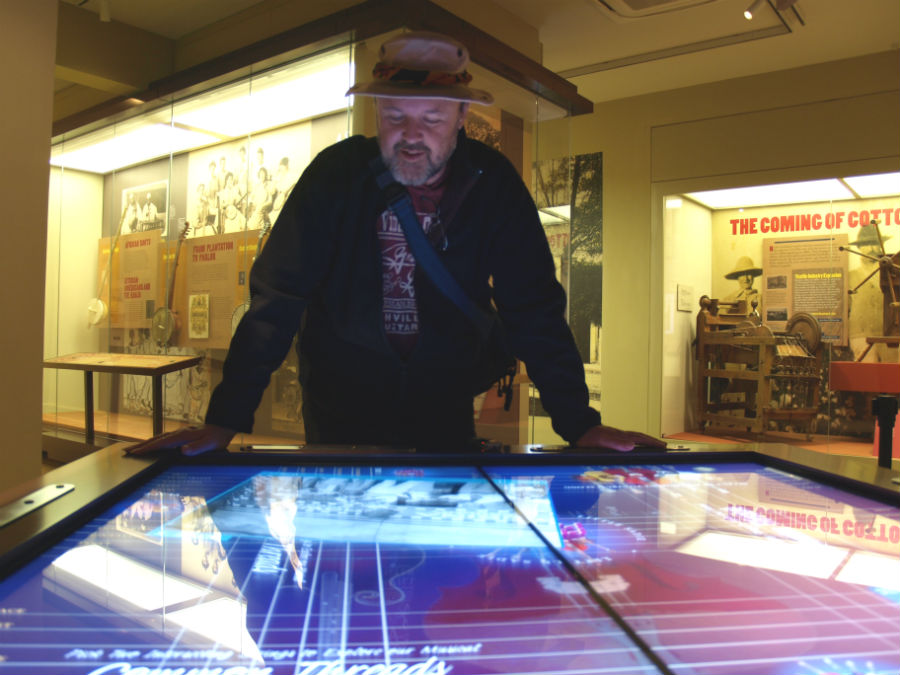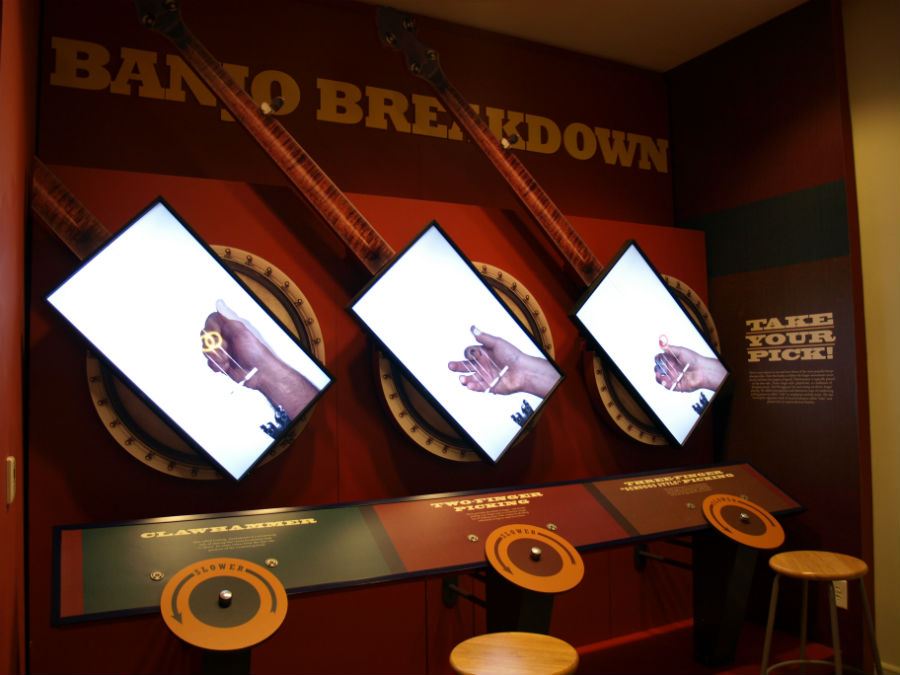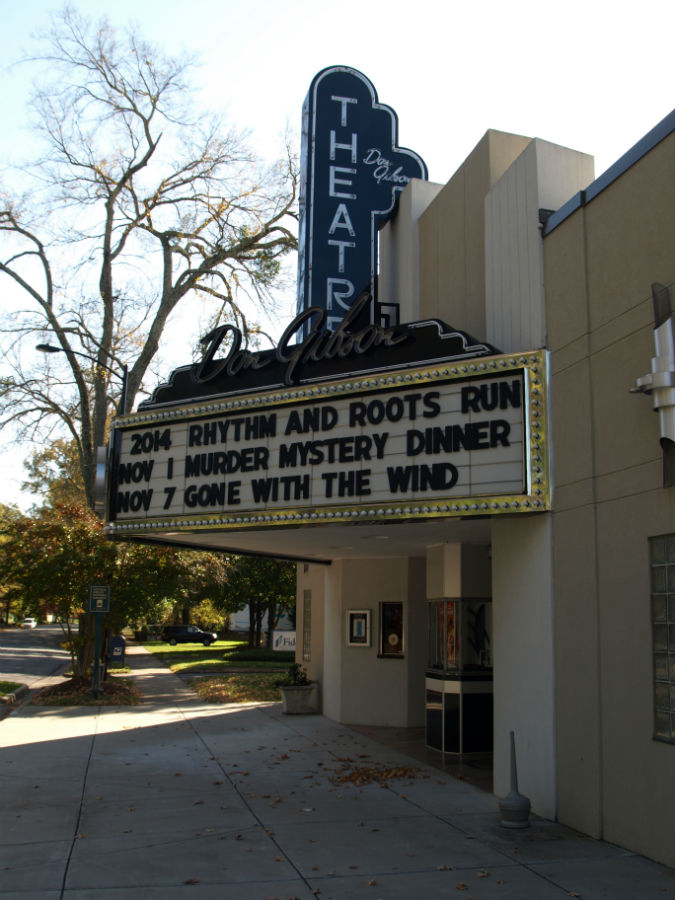The Carolina foothills have long been a centre of musical innovation and cross-cultural fusion. In this area of gently rolling hills, music and dance hold a place in the traditions of the community.
Enter the community jam. We were fortunate enough to visit several – and there are literally dozens of regular musical get-togethers. We’ve written about the excellent Earl Scruggs Center in Shelby, NC – if you are ever in the area it is worth a detour and several hours of your time. We gained a whole new appreciation for banjos and bluegrass and were eager to seek out spots we could hear more local players. We were not disappointed.
Fletcher
Because we really needed to see how the magic of bluegrass rolls out, we stopped in the town of Fletcher where, on a Monday night, we caught the open jam at the Feed & Seed: “A Family Friendly Live Music Venue that doubles as a church.” And it works.
This barely renovated, century-old feed and seed warehouse is now a non-denominational storefront church lovingly overseen by Pastor Phillip Trees. On Friday and Saturday nights bluegrass bands take to the stage (there’s a waiting list) and dancers practice their traditional Appalachian clogging (aka: flatfooting). Monday nights the church provides a home for the open community jam.
What we found was an evening of people immersed in the music of their lives and sharing their love of playing with anyone who walks through the door. This all-ages, all-faiths, event brings out the best in everyone.
We counted no fewer than 10 banjos, at least as many guitars, a doghouse (bass) and a sprinkling of violins (“fiddles,” y’all), resonator guitars and mandolins. There was even – cue the hairy eyeball – an electric bass on the bandstand. The average age was – oh, 65-70 – and there must have been 25-30 jammers all awaiting their turn and at least as many in the audience, cracking up, singing along and generally soaking up the vibe.
Pastor Trees has bands for his weekend shows lined up to play on his excellently appointed stage and sound system (two 20th-century Altec Lansing Voice of the Theatre speakers). The sound is terrific: warm and surrounding but not loud. Can’t make it to the Feed & Seed for a Monday night jam? You can stream the evening on your home computer. The cameras get turned on, the musicians fire the link to their Facebook friends and within a minute people are tuning in from all over the world.
As Pastor Trees says: “We’re free-giving back to the community.”
Drexel
In the Drexel Barber Shop, we crowded around a cluster of older men cradling a banjo, a mandolin, a resonator guitar, a guitar and a bass. Carroll Anthony’s dad – who carried his guitar into war with General Patton’s 3rd army – started this jam in 1964 and some combination of players and singers has been gathering here weekly since.
“He started strumming his guitar between haircuts,” Anthony explained. “Well, the chief of police played a mandolin. He started coming in and he’d pick a little bit. He’d get a call and have to take off. So he finally started leaving his mandolin at the shop. Joe came in and started playing banjo with them and it progressed from there. Today there are 30-40-50 people every Saturday morning.”
“These guys just love it. I couldn’t pay ’em to come here,” he explained. “They just love doing it.”
The sign in the barbershop says Pickin’ & Trimmin’ and that’s exactly what happens. Herbert Lambert – an 87-year old Second World War veteran – sat hunched over his mandolin.
“You’ll think he’s asleep, tobacco juice be drippin’ out of his mouth,” someone whispered, “but he’ll play here all day and go somewhere else to play all night.” Lambert plays circles around men 30 years younger. The back room is decked out with bluegrass memorabilia, posters of Bill Monroe, tributes to musicians who have visited, retired instruments adorn the walls and a circle of chairs for audience members close to the wood stove. It’s not fancy. It’s authentic.
There is no routine, no order of songs: one person starts up a melody and everyone else jumps in, takes their turn soloing, and comps along to the end. Visitors are welcome to sit in, youngsters are encouraged, singers are appreciated. Any skill level is welcome, as are players of any age. Most people play two or three instruments – some very well – and the whole spirit is about having fun and sharing the experience of making music.
Brevard
We loved the small town of Brevard (and not just because the incredibly efficient, family-owned – 100 years and counting – Eldridge Motors repair shop replaced our failed alternator with almost no notice). The new town library is great (it’s where we get lots of work done), there’s a world-class music school in town (the Brevard Music Center) and the downtown is neat and tidy with lots of interesting shops, including O.P. Taylor’s toy shop with one of the largest Lego inventories ever. The forests and waterfalls around Brevard have been used for movie shoots, including the first instalment of The Hunger Games.
We headed for the Silvermont bluegrass jam, started 32 years ago by local Harley Raines, sitting on his front porch. Things have grown and on Thursday nights the musicians and audience members crowd into a side room at the Silvermont, a heritage home that is now a community centre for seniors.
They jam here for the same reasons as everywhere else: for the pure enjoyment of playing and to keep the mountain music traditions alive. It’s mainly bluegrass and old-time, gospel mixed with a little bit of country.
Marion
The regular Friday night jam in the small village of Marion is named after a longtime local musician: Woody’s Original Mountain Music. Doors open at 6 pm and the music starts an hour later. Admission is free. Bands sign to be in the lineup and the list is posted up front. No one ever knows how many bands will show.
People were as interested in who we were and where we were from as we were about their fierce protection of traditional Appalachian mountain music.
The jam opens with a short prayer, led by Pastor Collins. Before and after, his wife mans the dessert table – thick calorie-laden slices of pie and cake fly off the shelf at 50 cents apiece. The goal is to keep the whole evening affordable.
The town is small but this event draws a regular crowd. Seats were quickly filled and new chairs are hustled to the sides. All were accommodated. The music and good vibes flow freely.
More info: Blue Ridge Music Trails of North Carolina

